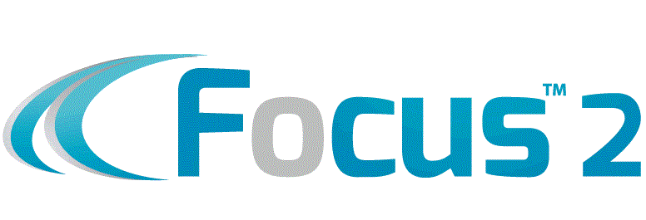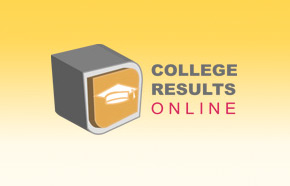How to Get the Most Out of College
They’re privileged, pivotal years. Navigate them with as much care as you did the path that got you there.
By Frank Bruni
Opinion Columnist
• Aug. 17, 2018
We overwhelm teenagers with advice about choosing a college. Go big. Go small. Put prestige above cost. Do the opposite.
We inundate them with tips for getting in. Spend summers this way. Write essays that way. Play a niche sport. Play an obscure instrument.
And then? We go mum, mustering less urgency and fewer words for the subject of actually navigating the crucial college years to best effect. It’s strange. And it’s stupid, because how a student goes to school matters much, much more than where.
So for several years — during visits to campuses, interviews with experts on higher education and interactions with recent graduates — I’ve been gathering wisdom along those lines.
My interest isn’t which types of programs at which kinds of institutions yield the surest employment and highest salaries. That information is already out there and always changing. I also worry that it casts college as purely vocational and plants the false notion that, at the age of 18, you know yourself well enough to plot out the entirety of your professional life.
My focus is on optimal ways to socialize, to prioritize, to pick up skills integral to any career and to open up exciting opportunities both en route to a degree and after you’ve acquired it. Not nearly enough of the roughly 20 million Americans who are beginning or resuming college over the coming weeks pause, in their trepidation and exhilaration, to think about that.
MORE ON HIGHER EDUCATION
Many don’t have the luxury: College for them is a slapdash scramble to grab credits as they can while working a demanding job, caring for family members or both. More than a third of the students enrolled in higher education in this country attend two-year institutions. Those at four-year institutions often don’t participate in the romantic ideal of nurturing dormitories and verdant quadrangles. They live with parents. They pray for parking.
But others do have the freedom to tailor their time. They just neglect to take advantage of it. My friend Eric Johnson, who provides guidance to underprivileged students at my alma mater, the University of North Carolina at Chapel Hill, put it to me this way: “The more you regard college as a credentialing exercise, the less likely you are to get the benefits.”
Johnson is as thoughtful and insightful about higher education as just about anyone I’ve come across. The wisest students, he said, “move into a peer relationship with the institution rather than a consumer relationship with it.” They seize leadership roles. They serve as research assistants.
And they build social capital, realizing that above all else, they’re in college “to widen the circle of human beings who know you and care about you,” he said. That’s perfectly put.
Many students, nervous about a new environment, follow friends from high school or people whose demographic backgrounds match their own into homogeneous cocoons. That can indeed provide solace and support. But it’s also a wasted opportunity — educationally, morally, strategically. Diversity opens you to an array and wealth of ideas, and being comfortable with it is an asset in just about any workplace or career. You can decide to establish that comfort in college.
But perhaps the most important relationships to invest in are those with members of the school’s faculty. Most students don’t fully get that. They’re not very good at identifying the professors worth knowing — the ones who aren’t such academic rock stars that they’re inaccessible, the ones with a track record of serious mentoring — and then getting to know them well.
As part of my research, I collected surveys from about 30 recipients of the prestigious Mitchell scholarship, a rough analogue of the Rhodes that sends 12 recent American college graduates every year to universities in Ireland to pursue master’s degrees. (I was on the panel of judges who selected the winners from 2015 through 2017.) I asked them to reflect on college and to rank, in order of importance, such activities and dynamics as coursework, travel abroad, internships, relationships with classmates, involvement in campus groups and reading done apart from any class obligation.
Relationships with faculty members was also an option, and it was the clear winner, placed near the top by almost all of the scholars and at the top by many, including Azza Cohen, a documentary filmmaker who graduated from Princeton in 2016. To explain that ranking, she directed me to a 2014 essay of hers for The Daily Princetonian that was titled “Empty Chairs.” It charted her realization and regret that she and so many classmates skipped professors’ office hours and didn’t avail themselves of invaluable conversations and counsel. “In the routine rush to finish our assignments, sometimes the breadth of the surrounding intellectual force field slips our minds,” she wrote. She was then a sophomore, and she mended her ways.
Reading her essay, I was reminded of an interview I did several years ago with Condoleezza Rice, the former secretary of state, about her days at the University of Denver. She said she liked to sign up for the front end of office hours, because she wanted to catch professors when they weren’t feeling depleted and watching the clock. She read up on professors beforehand and, if their written work was accessible, familiarized herself with it, so she could make mention of it. That flattered them and pegged her as a serious, considerate person.
Taking that too far, of course, could be repulsively obsequious. The correct calibration is everything. And it’s worth acing, because a professor or administrator who takes a genuine interest in you can be a bridge to other influential people inside and outside the school, to limited-space seminars, to special collaborations, to exclusive summer programs, to competitive internships, to graduate work and more.
Damian Walker saw that at U.N.C.-Chapel Hill, from which he graduated last spring. “The most influential thing I did here was find mentors,” he told me. And he found them largely by opening up to them.
Walker attended U.N.C.-Chapel Hill as a Carolina Covenant scholar, which means that his family was poor enough for him to qualify for full financial aid. He told me that early on he went to an open campus discussion about police violence against minorities. Several faculty members were also there, and he approached Judith Cone, the vice chancellor for innovation, entrepreneurship and economic development.
“I didn’t know who she was,” he recalled. “Short lady. I shared my story about how police shootings affected my life, my family. She gave me her business card and said, ‘Follow up.’ I still have that business card to this day.” He went to see her in her office and kept going to see her in her office, and with the encouragement and help of her and other faculty members, he cobbled together the money to go to an educational conference in Massachusetts, to meet with entrepreneurs in New York City and to spend the summer between his junior and senior years interning for a company in China. He’s about to head back to China to teach English for a while. He’s well on his way to fluency in Mandarin, which he thinks will give him a definite edge in any future business career.
Walker is an example of what a mammoth study by Gallup, Purdue University and the Strada Education Network has found. Previously known as the Gallup-Purdue Index and now called the Strada-Gallup Alumni Survey, it has questioned about 100,000 American college graduates of all ages about their college experiences, looking for connections between how they spent their time in college and how fulfilled they say they are now.
The study has not found that attending a private college or a highly selective one foretells greater satisfaction. Instead, the game changers include establishing a deep connection with a mentor, taking on a sustained academic project and playing a significant part in a campus organization. What all of these reflect are engagement and commitment, which I’ve come to think of as overlapping muscles that college can and must be used to build. They’re part of an assertive rather than a passive disposition, and they’re key to professional success.
I’m not saying that this is a cinch, nor am I ignoring the demons in the way. Anxiety and depression are legion on campuses today, holes that too many students fall into and never crawl out of. More than ever, students should be on the lookout for them and take the necessary steps to mitigate them.
Be careful, especially at the beginning of college, about spending too much time alone. Isolation can become its own bad habit, and prying eyes can be the best insurance policy against destructive behavior. Regulate time on social media, where discourse can be barbed and peers curate honeyed alter egos that stoke insecurity in those looking at them. Don’t drink too much and don’t shortchange sleep, as prosaic as that sounds. And work out in some way.
“We know that exercise is very, very important,” said Jan Collins-Eaglin, the associate dean for wellness at Pomona College in Southern California. “It will calm you down.” She noted, too, that many schools have invested in their mental health services but that many students hesitate to use them. “Seeking help is not taboo,” she said. “If you get over that, you are one step ahead of the game.”
One crossroads that students often get needlessly worked up about is choosing a major. It’s less make-or-break than you think. I hear that from a majority of thriving college graduates, and the professors I speak with strongly caution students against wedding themselves to a single field of study before being exposed to several of them. College’s greatest gifts can be an introduction to a passion you didn’t previously have and a pivot into an occupation you never before envisioned.
“You have to ask yourself what lies closest to your heart,” said Jim Gates, a renowned theoretical physicist at Brown University who previously taught at the University of Maryland and M.I.T. “If you are fortunate enough to find something that you’re totally obsessed with, you’re likely to work very hard at it. If you’re a human being of average intelligence and you work very hard at something, you’re likely to become very good at it. And if you become very good at it, people are likely to notice.” That means they’re likely to employ and reward you as well.
Regardless of major, there are skills to insist on acquiring because they transcend any particular career. Communication — clear writing, cogent speaking — is one of them, and many different courses can hone it.
Another of those skills, frequently overlooked, is storytelling. It’s different from communication: a next step. Every successful pitch for a new policy, new product or new company is essentially a story, with a shape and logic intended to stir its audience. So is every successful job interview. The best moment in a workplace meeting belongs to the colleague who tells the best story. So take a course in Greek mythology, British literature, political rhetoric or anything else that exposes you to the structure of narrative and the art of persuasion.
I asked Mitchell scholars if there was a department or discipline that they wished they had paid more heed. Science majors mentioned humanities. Humanities majors mentioned computer science and statistics. In retrospect, if not in real time, intellectually curious people appreciate and want the benefits of balance. So incorporate it, to some degree, in your college years.
Several Mitchell scholars also fretted that they’d lost out on some of what college had to offer by sticking to predetermined scripts, sweating perfection and avoiding risks. That dovetailed with a concern that many professors articulate to me — that students aren’t learning to stumble and to right themselves, which they can do in college with lower stakes than later on.
One of those scholars, Aaron Kurman, who graduated from the University of Virginia in 2005 and now works as a human rights lawyer in Israel, copped to all of that and more, writing: “I didn’t learn how to fail. I didn’t learn how resilient I was. I didn’t learn to distinguish between what was truly important to me and what I was doing because I thought it was important in others’ eyes. I didn’t learn how freeing it is to pursue what drives you even when others whose opinions you deeply value don’t understand or support it. I didn’t learn the value of doing something truly open-ended, where you don’t already know at the outset what you are going to do next.” All of that came later. But it could have come in college — at least the beginnings of it.
Something else that can come in college is an enormously expanded self-knowledge that translates into a hugely improved design for living. But that hinges on an adventurous spirit, especially outside the classroom.
“The mistake is to confuse career success, financial success and reputation with happiness,” said Andrew Delbanco, a Columbia University professor who is the president of the Teagle Foundation, which promotes liberal arts education, and the author of the 2012 book “College: What It Was, Is, and Should Be.” Delbanco added that an important component of real contentment is figuring out what lights your emotional and intellectual fires, not necessarily for the purpose of a job but for the purpose of reflections and pastimes that fill in all those hours away from work.
Is it poetry? Music? Sport? Those and more are abundant on college campuses. “You’re trying to shape a life that leads you to a happy place,” Delbanco said. Let college do precisely that.
Original article here: https://www.nytimes.com/2018/08/17/opinion/college-students.html







